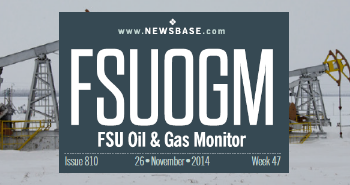Russia’s oil and gas revenues fall 25% in September, deficit seen rising

Russia’s oil and gas budget revenues fell 24.5% year on year in September to RUB582.5bn ($6.3bn), the Finance Ministry said on October 3, underlining the fiscal pressures facing Moscow as it battles declining energy income and rising spending, reported Vedomosti.
The ministry’s data showed that while revenues were up 15.3% from August, the nine-month total stood at RUB6.6 trillion, down more than a fifth from the same period last year. For October, the ministry expects a negative figure for additional oil and gas revenues of RUB26.9bn, compared with a surplus of RUB100.4bn a year earlier.
Russia operates a fiscal rule that requires extra energy revenues to be saved and used for foreign currency and gold purchases, while deficits trigger sales of reserves. Between Oct. 7 and Nov. 7, the ministry will sell RUB13.9bn worth of foreign exchange and gold to cover shortfalls.
Finance Minister Anton Siluanov has said Russia plans to cut its reliance on hydrocarbons, with their share of budget revenues falling to 22% in 2026 from 27% this year. He described efforts to “make the budget more muscular” to withstand sanctions and global market volatility.
Weaker oil revenues will push the federal budget deficit to RUB5.74 trillion in 2025, according to the latest three-year fiscal plan. Russia’s cut-off oil price in the fiscal rule is due to fall by $1 annually to $55 a barrel by 2030, from the current $60, restoring pre-pandemic parameters.
The Urals crude blend averaged $57.55 a barrel in August, while forecasts point to $58 this year and a gradual rise to $65 by 2028. Analysts say the volatility of oil and gas income is “absolutely natural” given market fluctuations.
“The task is to stabilise non-oil and gas revenues so that volatility does not threaten the budget,” said Alexander Knobel, head of the trade research centre at RANEPA.
Russia’s National Wealth Fund (NWF), used to cushion shocks, has seen its liquid part fall to RUB3 trillion, the lowest since 2019, equivalent to 1.3% of GDP. But the overall fund is expected to total RUB13.64 trillion, or 6.3% of GDP, by the end of 2025, which economists say provides a sufficient buffer.


Follow us online